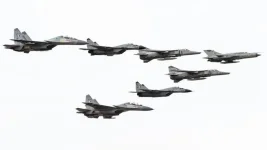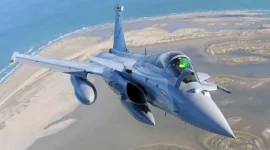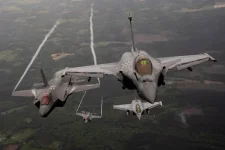- Views: 4K
- Replies: 12
The Indian Air Force (IAF) has entered into discussions with the Defence Research and Development Organisation (DRDO) regarding the essential modernization of its airborne surveillance capabilities. At the centre of these talks are the three EL/M-2090 Phalcon Airborne Warning and Control Systems (AWACS), which utilize Israeli technology mounted on Russian IL-76 heavy-lift aircraft.
Sources familiar with the matter indicate that the core technology within these Phalcon systems dates back over 25 years. While consistent software updates have kept these platforms operational, they are increasingly considered legacy systems. These aircraft, delivered between 2009 and 2011 under a trilateral agreement involving India, Israel, and Russia, currently represent the IAF's only AWACS assets providing full 360-degree aerial surveillance coverage using Active Electronically Scanned Array (AESA) radar technology. This capability is vital for maintaining comprehensive situational awareness over large areas.
However, significant strides in global radar technology and the changing demands of aerial warfare mean the quarter-century-old hardware is being surpassed by newer systems. Compounding the technological ageing are growing maintenance difficulties associated with the Russian IL-76 airframes, including challenges in sourcing necessary spare parts. These logistical issues add pressure to find a timely upgrade solution, especially given the systems' critical role in monitoring India's borders with China and Pakistan.
In response, DRDO's Centre for Airborne Systems (CABS) is developing advanced indigenous alternatives. A key proposal is the Netra MkIII system, planned for integration onto Airbus A330 platforms. This next-generation AWACS is expected to feature Gallium Nitride (GaN)-based radar technology, a significant improvement offering greater power efficiency and performance. Projections suggest the Netra MkIII could detect fighter-sized aircraft at ranges approaching 600 kilometres, substantially exceeding the capabilities of the current Phalcon system.
Two primary pathways are being evaluated by the IAF and DRDO for the existing Phalcon fleet. The first involves upgrading the current EL/M-2090 radar systems using domestically developed components and technologies. The second, more comprehensive option, entails replacing the entire radar system with a new one designed and built in India, capitalizing on DRDO's advancements in AESA radar, previously demonstrated in the smaller Netra AEW&C program mounted on Embraer EMB-145 jets.
For comparison, the Israeli Air Force itself has moved beyond the EL/M-2090, adopting the more advanced EL/W-2085 multi-band radar system integrated onto Gulfstream G550 business jets. This newer system reportedly offers enhanced performance and reduced operating costs compared to the large IL-76 platform. While approaching Israel for an upgraded radar for the IAF's Phalcons is a possibility, sources suggest this would likely require India to fund the entire development and integration process, potentially imposing a significant financial burden amid other defence priorities.
An indigenous upgrade or replacement path, leveraging DRDO's expertise from the Netra MkI and the ongoing development of the Netra MkII (also featuring GaN technology), offers potential advantages in terms of cost-effectiveness and fostering technological self-reliance. The newer indigenous radars promise not only extended range but also better resistance to electronic jamming and improved detection of low-observable or stealth targets.
Despite the clear need for modernization, officials indicate that a final decision on upgrading or replacing the Phalcon's main radar systems is not expected immediately. It is likely that any major program will be deferred until DRDO successfully demonstrates the capabilities of the developmental Netra MkIII system on the Airbus A330 platform. This A330-based AWACS is anticipated to be a significant leap forward, providing 360-degree coverage, longer flight endurance, and the extended surveillance range crucial for India's future air defence strategy. The performance of this new system will likely inform the final modernization strategy for the ageing Phalcon fleet.




